
Dolley Todd Madison was the wife of James Madison, the fourth president of the United States from 1809 to 1817. She was noted for holding Washington social functions in which she invited members of both political parties, essentially spearheading the concept of bipartisan cooperation. Previously, founders such as Thomas Jefferson would only meet with members of one party at a time, and politics could often be a violent affair resulting in physical altercations and even duels. Madison helped to create the idea that members of each party could amicably socialize, network, and negotiate with each other without violence. By innovating political institutions as the wife of James Madison, Dolley Madison did much to define the role of the President's spouse, known only much later by the title first lady—a function she had sometimes performed earlier for the widowed Thomas Jefferson.

Sarah "Sally" Hemings was an enslaved quadroon woman owned by president of the United States Thomas Jefferson, one of many he inherited from his father-in-law, John Wayles.

Abigail Adams was the wife and closest advisor of John Adams, as well as the mother of John Quincy Adams. She is sometimes considered to have been a Founder of the United States, and is now designated as the second first lady of the United States, although this title was not used at the time. She and Barbara Bush are the only two women to have been married to one U.S. president and the mother of another.

Sarah Churchill, Duchess of Marlborough, Princess of Mindelheim, Countess of Nellenburg, was an English courtier who rose to be one of the most influential women of her time through her close relationship with Anne, Queen of Great Britain. Sarah's relationship and influence with Princess Anne were widely known, and leading public figures often turned their attentions to her, hoping for favor from Anne. By the time Anne became queen, Sarah’s knowledge of government and intimacy with the queen had made her a powerful friend and a dangerous enemy.

Lou Hoover was the wife of President Herbert Hoover and served as the first lady of the United States from 1929 to 1933.
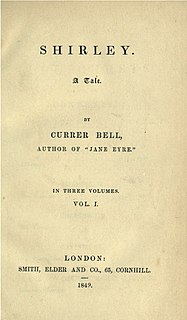
Shirley, A Tale is a social novel by the English novelist Charlotte Brontë, first published in 1849. It was Brontë's second published novel after Jane Eyre. The novel is set in Yorkshire in 1811–12, during the industrial depression resulting from the Napoleonic Wars and the War of 1812. The novel is set against the backdrop of the Luddite uprisings in the Yorkshire textile industry.
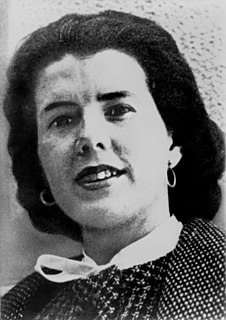
Shirley Ann Grau was an American writer. She was born in New Orleans, and her work is set primarily in the Deep South and explores issues of race and gender.
John Howland accompanied the English Separatists and other passengers when they left England on the Mayflower to settle in Plymouth. He was an indentured servant and in later years an executive assistant and personal secretary to Governor John Carver.
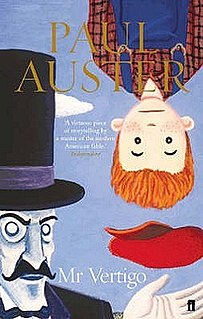
Mr. Vertigo is a novel written by the American author Paul Auster. Faber & Faber first published it in 1994 in Great Britain. The book fits well in Auster's bibliography, which has reappearing themes like failure and identity and genres like absurdist fiction, crime fiction and existentialism.

Helen Westley was an American character actress of stage and screen
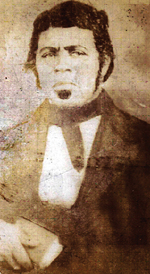
Paul Jennings (1799–1874) was an American personal servant, as a young enslaved man, to President James Madison during and after his White House years. Jennings is noted for publishing in 1865 the first White House memoir. His book was A Colored Man's Reminiscences of James Madison, described as "a singular document in the history of slavery and the early American republic."

Revenge of the Bridesmaids is a 2010 ABC Family Original Movie that premiered on July 18, 2010. It stars Raven-Symoné as Abigail and Joanna García as Parker, undercover bridesmaids with a mission to break up a wedding. In addition, the film's cast also features Virginia Williams, Beth Broderick, Chryssie Whitehead, David Clayton Rogers, Lyle Brocato and Brittany Ishibashi.

Keeper of the Bees is a 1935 American film directed by Christy Cabanne. The film depicts WWI veteran Jamie McFarland and his search for meaning in his last six months to live, and Molly Campbell, a young woman looking to save her sister's child from being left alone. It also features Emma Dunn as Margaret Campbell, Molly's charming mother and Edith Fellows as Jean-Marie "Little Scout", an adventurous young girl trying to fit in with her male friends.
William Robinson was a deputy governor of the Colony of Rhode Island and Providence Plantations.

Peregrina is a Mexican telenovela produced by Nathalie Lartilleux for Televisa. The series is a remake of the Venezuelan telenovela Kassandra. It premiered on November 14, 2005 and ended on March 31, 2006. It became an unexpected success, garnering ratings in excess of 30 points.

Começar de Novo is a Brazilian telenovela produced by Rede Globo and aired between 30 August 2004 and 16 April 2005.
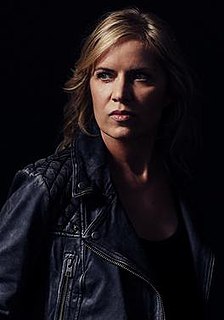
Madison Clark is a fictional character and the main protagonist for the first four seasons of the AMC television series Fear the Walking Dead. She is portrayed by Kim Dickens, and created by Robert Kirkman and former showrunner Dave Erickson. Madison is a former high school guidance counselor, Nick and Alicia's mother, and Travis Manawa's fiancée.

Nicholas Clark is a fictional character in the first four seasons of the television series Fear the Walking Dead. He is portrayed by Frank Dillane. Nick is the son of Madison Clark, the series' main protagonist throughout the first four seasons. Nick is a young adult who suffers from an addiction to heroin.

Louise Mitchell is a fictional character from the BBC soap opera EastEnders, who has been played by four different actors since her on-screen birth on 6 November 2001. Louise has been played by Rachel Cox between 2001 and 2003, Danni Bennatar in 2008, Brittany Papple in 2010, and Tilly Keeper in 2016 to 2020. Keeper's casting was announced on 16 December 2015 and she made her first appearance as Louise on 15 January 2016. The character's departure was announced in December 2019, with Louise making her last appearance on 24 January 2020.

















